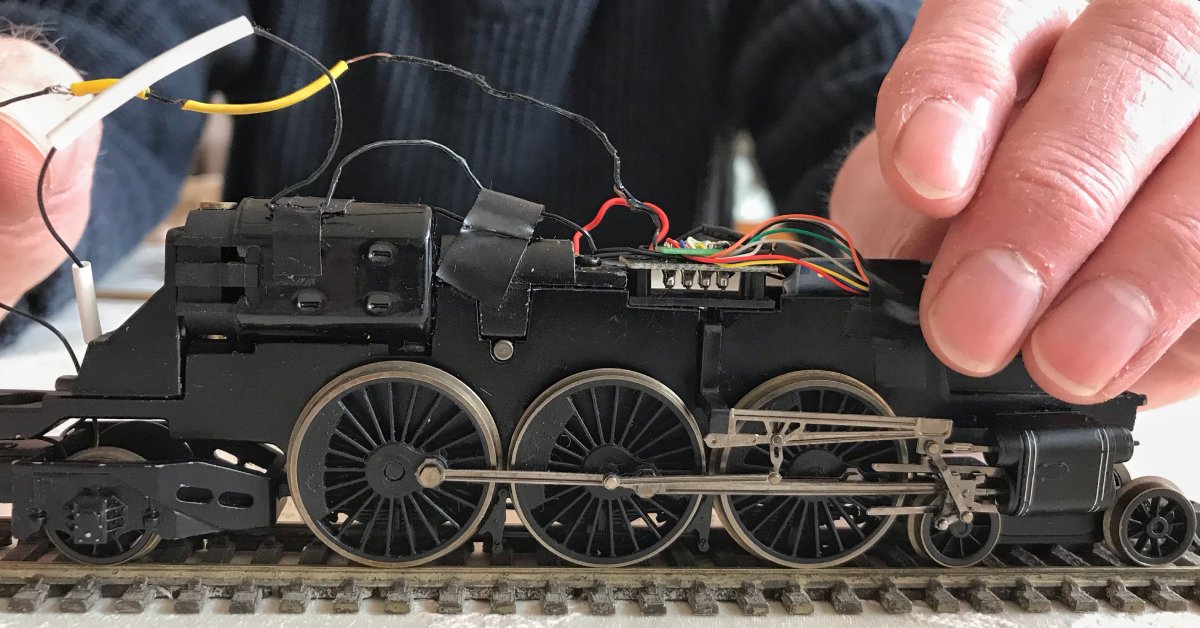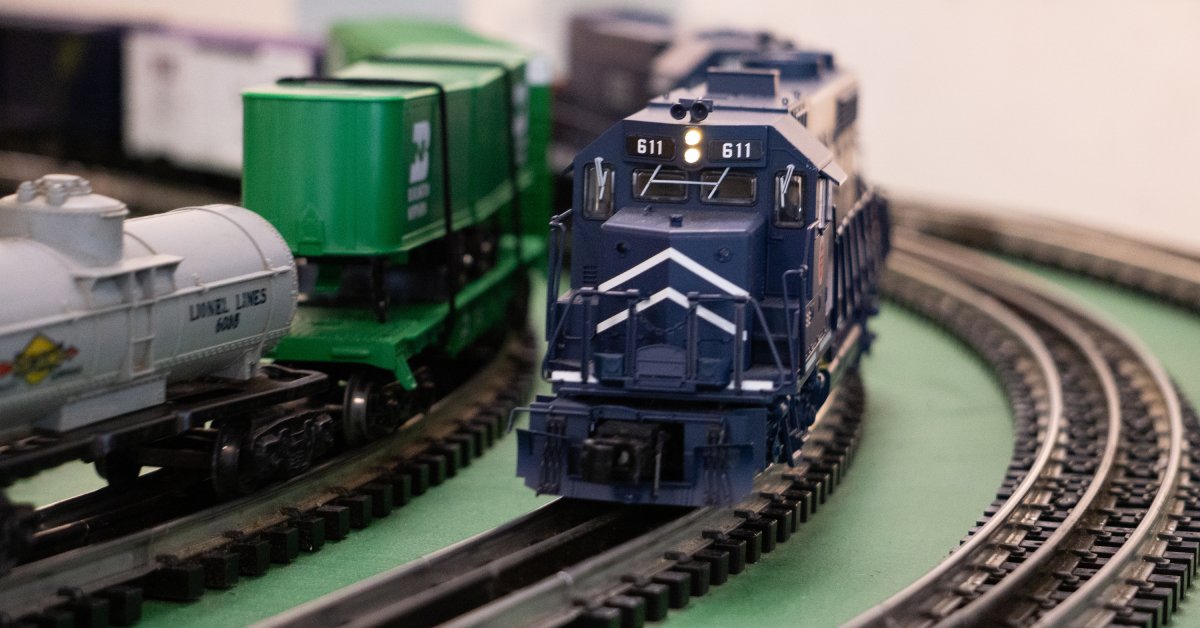Indoor vs. Outdoor: Choosing the Right G-Scale Setup
Garden-scale model trains are some of the best to use, but where should you set up yours? Here’s how to choose the right location for your G-scale setup.
by Theodore Hust • September 26, 2025
Choosing the right G-scale model train setup is an exciting venture, and deciding between an indoor or outdoor layout plays a crucial role in shaping your experience. Whether you’re creating a detailed miniature world inside or designing a dynamic scene outdoors, your decision impacts everything from maintenance to aesthetics.
When deciding whether to have your G-scale setup indoors or outdoors, it’s important to figure out which environment best suits your vision, space, and lifestyle. Model trains connect you to a timeless hobby, and picking the right setup ensures you'll truly enjoy every moment.
Space Availability
When deciding between indoor and outdoor setups, consider the space you have available. Depending on the type of layout you are wanting to create, an indoor layouts may require a small area like a spare bedroom or corner of a living room, or for more elaborate layouts, a basements or garage may be required. Outdoor layouts typically have larger open areas and would allow you to take full advantage a G scale layout’s potential. Make sure your chosen space can accommodate your track design, scenery elements, and any necessary equipment without feeling cramped.
Weather Considerations
Outdoor G-scale setups must handle exposure to the elements. Rain, wind, and temperature fluctuations may affect your tracks, trains, and accessories. For example, prolonged sun exposure might fade paint, while moisture can create rust and damage components.
Try to make sure that you use weather-resistant materials and plan for seasonal maintenance to protect your investment. Indoor setups avoid these issues and generally provide a controlled environment, making them easier to manage.
Initial Investment
Think about your budget and how it relates to each setting. While indoor layouts usually have lower startup costs, outdoor setups often need extra expenses, such as ground preparation or durable weatherproof materials. This could include waterproof wiring, outdoor-specific structures, and UV-resistant paint.
However, these costs enable you to craft a realistic experience in a natural setting. Make sure to assess how much you’re comfortable investing upfront and choose a layout that fits within your financial limits. Your setup should be something you can sustain and grow over time.

Maintenance Requirements
Indoor setups generally require less maintenance because they sit in a controlled environment. Dusting the tracks and ensuring smooth operation are usually enough to keep your system running. Outdoor layouts, however, will require regular upkeep. Tracks may need cleaning due to dirt, leaves, or debris, and occasional repairs might be necessary after storms or other weather events. When you choose an outdoor setup, make a plan for periodic inspections to keep everything running smoothly.
Scenic Potential
When creating your model train world, think about the scenic elements you can include in each environment. Indoor setups allow for precise control of every detail, including lighting, miniature buildings, and artificial landscapes. Outdoor setups, on the other hand, offer opportunities to incorporate natural features like plants, water, and even wildlife.
Year-Round Accessibility
Examine how accessible your layout will be throughout the year. Indoor setups offer year-round enjoyment, unaffected by cold winters or scorching summers. You can easily run your trains whenever inspiration strikes, regardless of the weather. Outdoor layouts may require you to limit certain activities during extreme conditions, such as heavy snowfall or storms.
However, the experience of running trains outdoors on a warm day can outweigh these limitations. Think about how often you want to work on your layout and whether seasonal accessibility matters to you.
Expansion Possibilities
If you love the idea of continually growing your train world, consider the expansion potential for each environment. Indoor setups might be limited, while outdoor spaces often offer room to expand over time. When designing an outdoor layout, you can leave space for:
- Additional tracks
- Structures
- Vegetation
Make sure to think about how much growth your chosen environment allows so you can keep up with your evolving creativity. Whether you aim for a compact indoor design or an expansive garden railway, ensure your layout inspires ongoing excitement.
Physical Challenges
Both indoor and outdoor setups present unique physical challenges. Indoor layouts may require you to work in smaller spaces or reach into tight corners when building and maintaining your scene. Outdoor setups, on the other hand, might require bending, digging, or working on uneven terrain to ensure proper track alignment. Look for an option that suits your physical abilities and offers a comfortable building and operating experience.
Longevity of Materials
The longevity of your materials depends on where you place your layout. Outdoor elements need to withstand exposure to rain, wind, and sunlight, so investing in durable, high-quality materials is essential. Indoor materials often last longer because they remain in a stable, climate-controlled environment. Ensure that your tracks, structures, and scenery choices are appropriate for their setting to maximize durability.

Lighting and Visibility
Lighting plays a key role in the enjoyment of your layout. Indoor setups give you full control over the lighting design, allowing you to simulate daytime and nighttime scenes with ease. Outdoor layouts naturally rely on daylight, which can change throughout the day and affect the visibility of your trains and scenery. When deciding on your layout location, think about how lighting will affect your enjoyment and how you can create the atmosphere you want.
Noise Levels
Consider whether noise might impact your choice. Outdoor setups allow for natural sounds to blend with your trains, creating a harmonious experience. Train noises might echo in smaller indoor spaces or create a louder environment. When planning your layout, think about how noise levels interact with your environment and what experience you prefer for operating your G-scale trains.
Transportation and Storage
Transportation and storage of your trains and equipment might influence your setup preference. Indoor layouts offer a built-in space where everything stays protected and ready. Outdoor layouts often require moving equipment inside and outside periodically, depending on weather and maintenance needs. With proper organization, both setups can function smoothly, but you’ll want to choose one that aligns with your preferences and available storage options.
Social Engagement
If you enjoy sharing your model train hobby, think about which environment encourages interactions. Indoor layouts are great for hosting guests in a cozy, controlled setting. However, outdoor layouts can transform into focal points for gatherings, especially during nice weather. A garden railway offers opportunities to entertain family and friends while showcasing your trains in a vibrant, natural environment.
Choosing the right G-scale setup and knowing whether to have it be indoors or outdoors is a personal and exciting endeavor. Whether you gravitate toward the precision and control of an indoor layout or the expansive, dynamic charm of an outdoor railway, both options offer unique opportunities to bring your creative vision to life.
When you consider these factors, you can craft a model train world that aligns seamlessly with your lifestyle and aspirations, and Only Trains can help. With our garden-scale straight tracks, you can bring your model railroad to life, whether it’s inside or outside! Remember, the ultimate goal is not only to build a layout but to create an engaging, enduring connection to this timeless hobby.

.jpg)